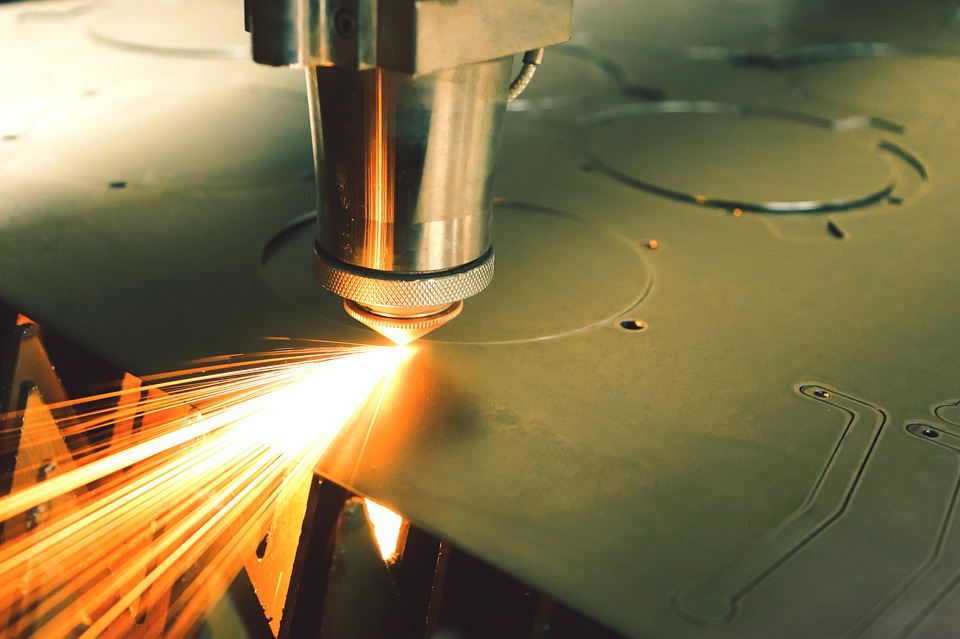
Laser Cutting

For long, laser cutting has been synonymous with all things clean and precise, for a good reason. Laser cutting is reliable and versatile and hence can apply to all forms of materials. It also offers an endless list of benefits in comparison to what the traditional cutting techniques have to offer. As we speak, laser cutting is now the industry standard in several industrial sectors. Everything from aerospace and automotive to semiconductor component manufacturing, the laser is an adaptive manufacturing technique.
How Does Laser Cutting Work?
Laser cutting is among the most popular manufacturing techniques in the world. The technique is used for an endless list of industries all over the world. The primary application is removing excess materials where laser guarantees you optimal precision. The laser is a thermal-bases procedure where a focused laser beam melts an area of material that is highly targeted for cutting. The cut is executed by combining heat and pressure that is directed through the nozzle. The molten material is ejected with the help of the gas jet to create a small kerf.
This technique is primarily used in cutting metals. The laser machine has the capacity of handling any materials that are thrown in it whether it is brass, aluminum, tungsten, nickel, and steel cutting. The laser technique can also cut reflective metals such as silver and gold and non-metallic materials like plastics rubber and polymers. Contract Manufacturing Specialists of Michigan specializes in steel laser cutting. Lasers are widely used in the critical manufacturing processes that involve the cutting of silicon. It makes it a critical tool in producing high-tech components like solar panels. Semiconductors, and microelectronic parts.
Top Benefits of Laser Cutting
So many factors contribute to the widespread popularity of the laser cutting technique. The main advantage over traditional techniques is the high accuracy and precision that it offers. Laser cutting will guarantee you excellent performance whenever you need a clean-cut and smooth finish. The reason is that the laser uses a highly focused beam that holds tight tolerances around the cutting region.
Now that laser is implemented within the limits of a strictly defines area, with no need for added heat, you can work on narrower material sections in comparison to the other techniques. The heat-affected zone for the laser is relatively small meaning that the material you are working on will be less impacted by distortion or warping that results from changes in its microstructure. Unlike the other competing techniques, laser cutting produces highly complex geometries with excellent tolerance levels and better precision.
As we mentioned earlier, the laser can cut through materials that have varying thicknesses. You can manipulate it easily to deliver the desired shape depending on the needs of the customer. Laser cutting is an extremely fast process and you can repeat it with equally high precision levels. The resultant kerf width allows for high levels of sheet utilization as it enables efficient part nesting. It helps you to save on the utilization of material and reduces the costs that are associated with the overall scrap wastage.
Laser cutting also adapts to the ever-changing manufacturing demands easily. This is both in market needs and production volume. The laser cutting equipment can be repurposed and set up for specific needs much faster than the tools that are used in traditional cutting processes. Because laser-cut materials typically need no cleanup, using laser increases the throughput and removes other secondary operations which allow manufacturers to avail the product to product to the customer within less time. Here are the other reasons why manufacturers prefer to use laser cutting techniques;
Laser cutting does not call for exchanging tools between every separate cut. The same setup can cut various shapes within the same thickness of the material. Besides, intricate cuts don’t pose any challenges. One of the primary advantages of laser cutting over the other thermal cutting techniques is accuracy. It has an accuracy of +/-0.1mm helping you to achieve high precision with no after treatment. With such a high standard, you won’t require any tolerances. +/-0.05mm makes sure that the parts are pretty much replicated of each other. Laser cutting is much quicker than the traditional mechanical cutting techniques, especially when dealing with more complex cuts. If you compare it to the other thermal cutting techniques like flame or plasma cutting, laser beats them in speed to a thickness of approximately 10mm. The main point narrows down to the power of the laser. This job requires less manpower because modern laser cutters are highly automated. Using experienced people to operate the machines also play a critical role in the quality of the final product. However, the laser requires less labor at any cost. Most machines have feeding systems and follow-up conveyors especially the high-priced machines. With the right setup, the laser cutter will only leave behind a small burr. In most cases, you don’t even have to remove it. It depends on the type of materials, its thickness, and several other factors. The small heat-affected zone results in more reliable and predictable parts. Laser cutting uses a beam that gets in contact with the material. Therefore, no mechanical friction is available to wear tools. Laser cutting is applicable to different types of materials. These include metals, paper, wood, MDF, and acrylic among others. You can configure one machine to perform different tasks. The ability to cut a certain material depends on the power that the machine has. Apart from cutting, these machines are also used for laser marking. Marking has so many applications in the production of everyday products. You can also use this technology for a broad range of profiles. The tube laser cutting performs the process of anything from open channel to box sections. Flexibility
Precision
Repeatability
Speed
Automation
Quality
Contactless Cutting
Versatility
Working with the Laser Cutting Technique
Laser cutting has clear benefits over the traditional methods of manufacturing. It combines highly focused pressure and energy in cutting a much narrower and smaller area of material with significantly reduced scrap levels or heat waste. It has a highly precise and compact area of impact that enables you to create complex geometrical shapes with cleaner-cut finishes and smoother edges.
Because of this, laser cutting is now the go-to manufacturing technique for microelectronics, aerospace, metalworking, and automotive industries among others. To choose the right laser cutting type, whether it is rotary die-cutting or laser die-cutting, you have to partner with a trustworthy partner to guide you through the selection process. You will be able to create a tailored solution for the unique precision needs that you have. The best brand, for this reason, is Contract Manufacturing Specialists of Michigan.
The Challenges the Professionals Will Help You to Overcome
Although laser is used in almost all industries, it also has its own downsides. You need the expertise to be able to overcome some of these issues. You cannot work on a laser cutting project unless you are a specialist operator. With the right setup, the cutting quality will be up to the standard and you will get meet your expectations from the technique.
The other challenge is the limitation of metal thickness. Unlike the other thermal cutting methods, the laser cannot be used to cut very thick plates. The largest possible thickness depends on the type of machine and the technical know-how. Most fabrication companies work on laser cutting of up to 15 or 20mm.
We also have a downside with the upfront cost. The prices of buying a laser machine are very expensive. The cost can be double that of buying plasma cutters or water jet. However, the efficiency and running costs make up for this in the long run hence making it a worthwhile investment.
One advantage of the laser is that it can cut different types of materials. With the thermal cutting technique, it will make the material waste hence leading to dangerous fumes and emitted gases. The case can be worse when cutting plastics. Therefore, you need enough ventilation to create a safe working environment.
Given the quality of staff and equipment that we have, you can be sure of getting the best rates from our brand. To benefit from our services, feel free to call us today. We have a team that is ready to give you the best services all the time.
Our core offerings and services at Contract Manufacturing Specialists of Michigan includes, but is not limited to, the following below:
We service multiple cities throughout the state of Michigan. We provide all the services listed above, and much more in every city throughout Michigan.
If you don’t see your city listed or a specific service listed, don’t worry. All you have to do is contact us by either giving us a call or filling out our online contact form. Then we’ll discover what are some of the top solutions for you, your business, and executing a solid solution.
